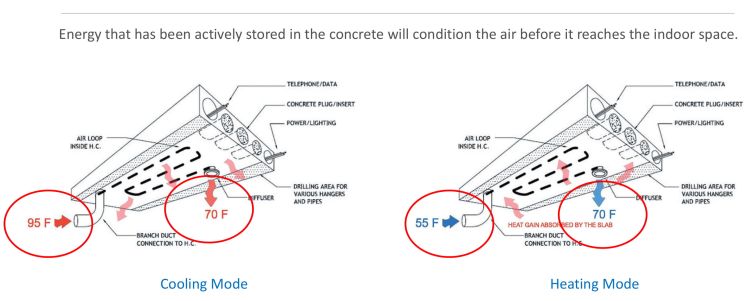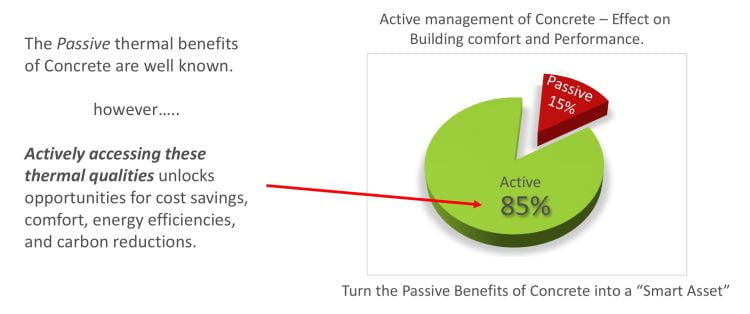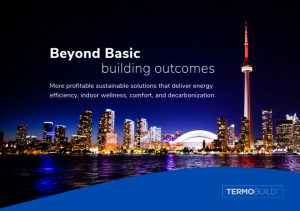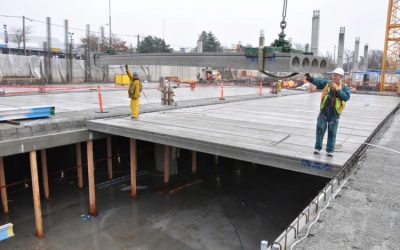Tackling the Global Energy Crisis with Passive and Active Cooling in Buildings
As the global energy crisis continues to loom large, innovative solutions are required to address the escalating energy demands of modern society. TermoBuild’s Integrated Thermal Storage Ventilation, stands at the forefront of this transformation, providing a solution to combat energy scarcity and reduce greenhouse gas emissions through both passive and active cooling strategies.
The Global Energy Crisis: A Multifaceted Challenge
The global energy crisis is a multifaceted challenge that demands a multifaceted response. Rapid urbanization, population growth, and the intensifying effects of climate change have led to an unprecedented demand for cooling in buildings. Traditional cooling methods, reliant on energy-intensive air conditioning systems, contribute significantly to energy consumption and greenhouse gas emissions. In this context, the need for sustainable and efficient cooling solutions has never been more pressing.
Thermal Energy Storage: A Paradigm Shift in Cooling
Thermal energy storage for both passive and active cooling has emerged as a game-changing approach to address the global energy crisis. This concept leverages the principles of thermal mass, where materials such as concrete are strategically integrated into building design to absorb, store, and release thermal energy. This enables buildings to maintain comfortable temperatures without overburdening mechanical cooling systems.
Passive cooling harnesses the inherent properties of materials like concrete to naturally regulate indoor temperatures. By absorbing excess heat during the day and releasing it gradually during cooler periods, passive cooling significantly reduces the need for energy-intensive cooling methods. This, in turn, reduces electricity demand, eases strain on power grids, and contributes to a more sustainable energy future.
Active cooling takes this concept to the next level by incorporating advanced systems that actively store and distribute thermal energy. This is where TermoBuild’s Integrated Thermal Storage Ventilation comes into play, offering a comprehensive solution that combines heating, cooling, fresh air ventilation, and thermal energy storage in a single, integrated system.
TermoBuild’s cutting-edge technology epitomizes the synergy of innovation, sustainability, and energy efficiency. At its core, the system revolves around using concrete floors as conduits for air circulation. During cooler nighttime hours, fresh air is channeled through ducts embedded in concrete flooring, allowing the material to absorb and store thermal energy. As daylight hours bring rising temperatures, the stored energy is gradually released to regulate indoor climate, reducing the need for conventional cooling systems.
What sets TermoBuild’s system apart is its holistic approach to energy management. By optimizing the interplay between heating, cooling, ventilation, and energy storage, the system operates intelligently and efficiently, ensuring occupant comfort while minimizing energy consumption. The proprietary software algorithm, aligned with ASHRAE Standards, guides the system’s operation, requiring minimal maintenance and providing a seamless user experience.
The global energy crisis is a complex challenge that demands multifaceted solutions. The integration of thermal energy storage for passive and active cooling in buildings offers a multifarious approach that addresses multiple aspects of this crisis:

Addressing it:
Energy Conservation: By effectively utilizing natural thermal mass properties and advanced active cooling systems, buildings can significantly reduce their reliance on energy-intensive cooling solutions.
Peak Load Management: The implementation of thermal energy storage helps flatten peak electricity demand, mitigating strain on power grids during high-demand periods and reducing the risk of blackouts.
Renewable Integration: Thermal energy storage enhances the feasibility of incorporating renewable energy sources like solar power. Excess solar energy can be stored thermally and used for cooling during peak hours.
Emission Reduction: Decreased dependence on conventional cooling methods directly translates to reduced greenhouse gas emissions, contributing to global efforts to combat climate change.
Resilience and Adaptability: Buildings equipped with efficient thermal energy storage systems are better equipped to handle extreme temperature variations, enhancing overall resilience and adaptability in the face of a changing climate.

A Sustainable Path Forward
TermoBuild’s Integrated Thermal Storage Ventilation represents a beacon of hope in the fight against the global energy crisis. By seamlessly blending passive and active cooling strategies, the system not only reduces energy consumption and greenhouse gas emissions but also enhances building resilience and sustainability.
As societies worldwide continue to grapple with energy challenges, solutions like TermoBuild’s innovative technology offer a roadmap to a more sustainable and harmonious coexistence with our planet. Embracing such revolutionary concepts not only helps secure our energy future but also leaves a lasting legacy of responsible innovation for generations to come.

MEET THE AUTHOR




